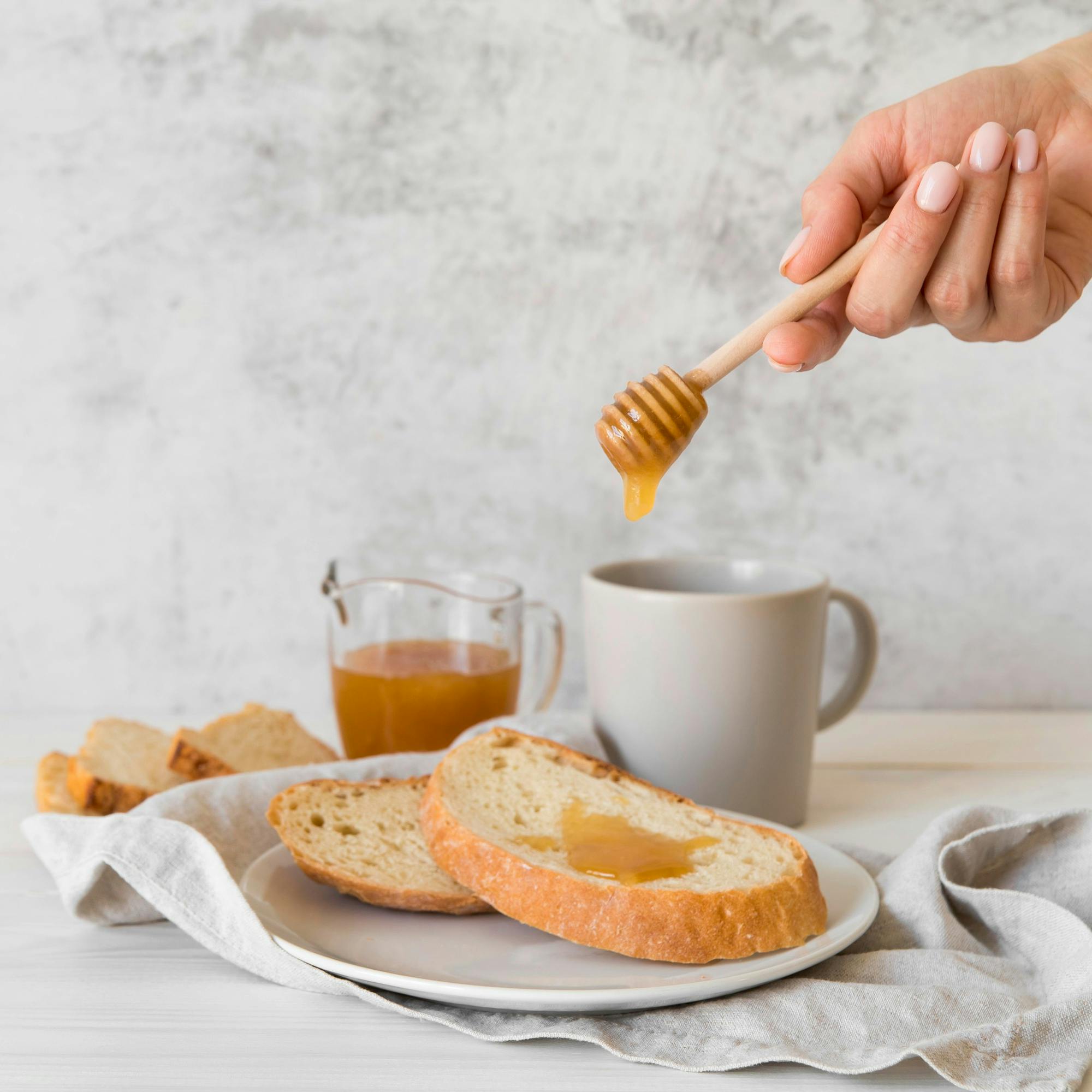High-Fructose Corn Syrup: Health Effects, Risks, and Safer Alternatives
By Lilian E.
Reviewed by Dr. Jossy Onwude, MD
Published Sep 8, 2025
10 min read

If you’ve ever picked up a soda, a sweetened cereal, or even ketchup, chances are you’ve seen “high-fructose corn syrup” (HFCS) on the ingredients list. For years, HFCS has been at the center of heated debates about health. Some people blame it for rising obesity rates, diabetes, and even liver disease, while others argue it’s no worse than regular table sugar.
So, what’s the truth? Is high-fructose corn syrup a health-destroying ingredient you should avoid at all costs, or is it just another form of sugar that gets too much hate?
In this guide, we’ll break everything down in simple, clear terms. We’ll look at what HFCS actually is, how your body processes it, what science says about its health effects, and—most importantly—how you can make smarter choices about sweeteners in your diet.
By the end, you’ll understand exactly what HFCS does in your body, whether it’s worse than sugar, and how to avoid it if you choose to.
What Is High-Fructose Corn Syrup?
High-fructose corn syrup is a sweetener made from corn starch. Corn starch itself is just a carbohydrate that can be broken down into simple sugars. Through a process involving enzymes, regular corn syrup (which is pure glucose) is partially converted into fructose, creating high-fructose corn syrup.
The word “high” in HFCS might sound alarming, but it simply means the syrup contains more fructose than regular corn syrup, not that it’s 100% fructose. Most versions contain a mix of glucose and fructose, just like table sugar (sucrose), which is also half glucose and half fructose.
Food companies love HFCS because it’s cheap, sweet, easy to transport, and helps preserve food products. It also gives processed foods a pleasant texture and taste. That’s why you’ll find it in everything from soda to salad dressings.
RELATED READ: Fructose vs. Glucose vs. Sucrose: Which Sugar Is Healthiest for Your Body? (Backed by Science)
Types of High-Fructose Corn Syrup
Not all HFCS is the same. The main types you’ll come across are:
- HFCS-42: About 42% fructose and 58% glucose. This is commonly used in baked goods, cereals, and condiments.
- HFCS-55: About 55% fructose and 45% glucose. This is most often found in soft drinks and sweetened beverages.
For comparison, table sugar is about 50% fructose and 50% glucose. So, while the difference might look small on paper, the way HFCS is used—especially in large quantities in sodas—can make a big difference for your health.
HFCS vs. Sugar: What’s the Difference?
At first glance, HFCS and table sugar don’t seem all that different. Both contain glucose and fructose. The key difference lies in how those sugars are structured.
In sucrose (table sugar), glucose and fructose are chemically bonded together. Your digestive system must break that bond before your body can use them.
In HFCS, glucose and fructose are already “free,” meaning they’re not bonded. That makes them slightly easier and faster to absorb. This small difference may affect how your body metabolizes them, especially when you consume large amounts.
Another difference is practical, not chemical: HFCS is liquid, which makes it easier and cheaper to mix into beverages and processed foods. Sugar, on the other hand, is crystalline and often requires dissolving.
So while your body may process them in similar ways, the availability and form of HFCS have made it a much bigger part of the modern food supply.
How the Body Processes High-Fructose Corn Syrup
To understand why HFCS gets so much attention, you need to know what happens inside your body when you consume it.
When you eat glucose, your body uses it for immediate energy. It raises your blood sugar, which triggers insulin release, helping your cells absorb glucose for fuel.
Fructose, however, works differently. It doesn’t cause a big spike in blood sugar because it’s processed almost entirely by the liver. While that might sound like a good thing, it can backfire when you consume too much. The liver can only handle so much fructose at once. When it gets overloaded, it starts turning the excess into fat. Over time, this can contribute to fatty liver disease, higher triglyceride levels, and weight gain.
In moderation, your body can handle fructose just fine—after all, fruit contains fructose too. But the problem with HFCS is that it’s often consumed in very large amounts, hidden in processed foods and sugary drinks. Unlike fruit, which comes with fiber, vitamins, and antioxidants, HFCS delivers fructose in a concentrated, nutrient-poor form.
Health Risks Linked to High-Fructose Corn Syrup

Over the past few decades, researchers have uncovered strong connections between excessive HFCS consumption and a range of health issues.
One of the most obvious is weight gain and obesity. Sugary drinks sweetened with HFCS pack in calories without making you feel full. Unlike solid foods, liquid calories don’t satisfy hunger in the same way, so people tend to drink more than they realize.
Excess HFCS also plays a role in insulin resistance and type 2 diabetes. When your body constantly has to deal with high amounts of sugar, it becomes less sensitive to insulin. That means glucose builds up in the blood, leading to higher blood sugar levels and eventually diabetes in some cases.
Another growing concern is non-alcoholic fatty liver disease (NAFLD). Since the liver processes fructose, too much can lead to fat buildup in the liver. Over time, this can cause inflammation, scarring, and serious liver problems.
There’s also evidence that HFCS contributes to inflammation, high blood pressure, heart disease, and metabolic syndrome—a cluster of conditions that increase your risk of serious illness.
And let’s not forget dental health. Like all sugars, HFCS feeds the bacteria in your mouth, producing acids that erode tooth enamel and cause cavities.
While research continues, one thing is clear: diets high in HFCS and added sugars in general are strongly linked to poor metabolic health.
Common Foods and Drinks That Contain HFCS
One of the tricky things about avoiding HFCS is that it shows up in many foods you wouldn’t expect. Everyone knows sodas are packed with it, but HFCS is also hidden in everyday items like bread, crackers, flavored yogurts, salad dressings, sauces, and even granola bars.
Condiments like ketchup, barbecue sauce, and even pickles often contain HFCS. Breakfast foods such as pancakes syrups, sweetened cereals, and packaged pastries are also common sources.
If you want to spot it, check the ingredient list. It might appear as “high-fructose corn syrup,” “HFCS,” or sometimes just “corn syrup” (though plain corn syrup isn’t the same).
Being label-savvy is key, because HFCS is often in products marketed as “healthy” or “low-fat,” where extra sugar is added to improve taste.
High-Fructose Corn Syrup and the Food Industry
Why did HFCS become so popular in the first place? The answer is largely economic. In the United States, sugar tariffs and corn subsidies made HFCS a much cheaper option for food manufacturers starting in the 1970s.
Soft drink companies quickly adopted it because it was cheaper than cane sugar and blended easily into liquids. Over time, HFCS became the go-to sweetener for much of the processed food industry.
Globally, its use varies. In Europe, HFCS consumption has historically been lower due to different agricultural policies and consumer preferences. But in the U.S., HFCS has dominated for decades.
Interestingly, growing consumer awareness has pushed some brands to advertise “made with real sugar” or “no HFCS” as a selling point. This shift shows just how much public perception has turned against it.
Is HFCS Worse Than Regular Sugar? The Scientific Debate
So, is HFCS truly worse than sugar, or are they equally bad? Scientists don’t fully agree.
On one hand, because HFCS and sugar are so chemically similar, many experts argue that the body processes them in nearly the same way. From this perspective, the real issue isn’t HFCS specifically but the overconsumption of added sugars in general.
On the other hand, some studies suggest HFCS may have unique effects because of the way its free fructose is absorbed. Some research shows that it may promote fat storage more rapidly, and people tend to consume more of it because it’s so widely used in drinks.
The safest conclusion? Whether it’s HFCS or sugar, too much of either is harmful. The focus should be on reducing overall added sugar intake, not just swapping one for the other.
Healthier Alternatives to High-Fructose Corn Syrup
If you’re trying to cut back on HFCS, you might wonder what to use instead. Natural sweeteners like honey, maple syrup, and date syrup can be better choices because they also contain small amounts of vitamins, minerals, and antioxidants. But they’re still sugars, so moderation is key.

Low-calorie sweeteners such as stevia, monk fruit, or allulose are also becoming popular. These provide sweetness without spiking blood sugar, making them appealing for people with diabetes or those trying to manage their weight.
Of course, the healthiest option is to limit added sweeteners altogether and get sweetness from whole foods like fruit. That way, you’re also getting fiber, vitamins, and protective compounds.
How to Reduce High-Fructose Corn Syrup in Your Diet
Avoiding HFCS doesn’t mean you have to give up all your favorite foods. It just requires a little awareness and planning.
Start by reading labels carefully. If HFCS is one of the first ingredients listed, that’s a red flag. Choose alternatives without added sugars when possible.
Cooking at home gives you more control. Instead of buying bottled salad dressings or sauces, try making your own with simple ingredients. Swap sodas for sparkling water flavored with fruit. Keep healthy snacks like nuts, fruit, or plain yogurt on hand so you’re less tempted by processed foods.
Over time, your taste buds adjust, and you’ll find that you don’t need foods to be as intensely sweet as before.
Frequently Asked Questions (FAQs)
1. Is HFCS banned in some countries?
Not exactly banned, but many countries use it less than the U.S. due to agricultural policies and consumer demand for sugar instead.
2. Does HFCS cause cancer?
There’s no direct proof that HFCS causes cancer, but high sugar intake in general may increase cancer risk by promoting obesity, inflammation, and insulin resistance.
3. Why is HFCS cheaper than sugar?
Because of U.S. government subsidies for corn and tariffs on imported sugar, HFCS became a much cheaper option for manufacturers.
4. How much HFCS is too much?
Health guidelines recommend limiting all added sugars (including HFCS) to no more than 10% of daily calories. For most adults, that’s about 50 grams—or roughly one can of soda.
5. Is fruit sugar (fructose) the same as HFCS?
Not really. Fruit contains fructose, but it also has fiber, water, vitamins, and antioxidants, which change how your body processes it. HFCS, on the other hand, delivers fructose without those protective nutrients.
Conclusion
High-fructose corn syrup is one of the most widely used sweeteners in processed foods and drinks. While it’s not drastically different from regular sugar in terms of chemistry, its widespread use, especially in sugary beverages, has made it a major contributor to rising health problems like obesity, diabetes, and fatty liver disease.
The good news is, you don’t need to panic or cut out every trace of HFCS to be healthy. The real key is awareness and moderation. By reading labels, choosing whole foods more often, and cutting back on sweetened drinks and snacks, you can drastically reduce your intake.
At the end of the day, whether it’s sugar, HFCS, or honey, the healthiest diet is one that limits added sugars overall and focuses on nutrient-rich, whole foods.
Your body—and your future self—will thank you for it.
Share this article

Low Sodium Diet: Simple Guidelines, Food Lists, and Tips for Better Health
Lilian E.
Sep 30, 202512 min read

Does Coconut Milk Affect Blood Sugar Levels? A Complete Guide for Diabetes and Healthy Living
Karyn O.
Sep 29, 202510 min read

5 Best Bone Broths for Health, Nutrition, and Gut Support (Nutritionist-Backed Guide)
Karyn O.
Sep 24, 202511 min read

Best-in-class care is a click away
Find everything and everyone you need to reach your metabolic health goals, in one place. It all makes sense with Meto.
Join Meto